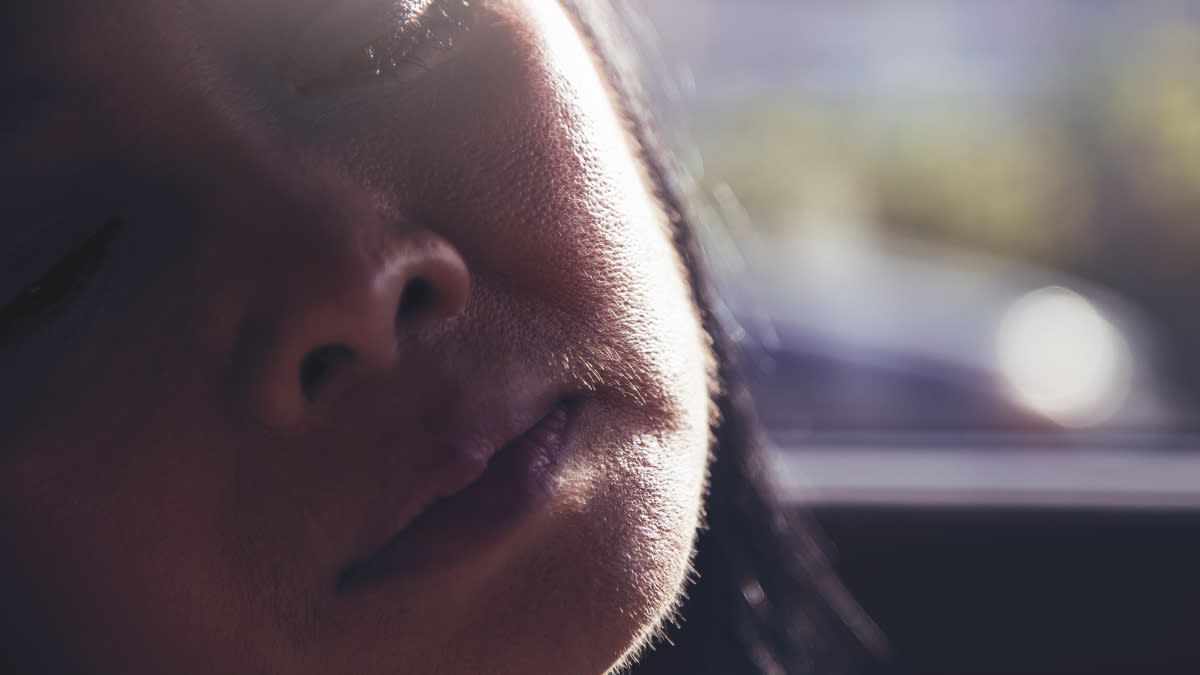What to Do About Facial Hair: Best Techniques for Peach Fuzz, Cheeks, Jawline, and Brows

As humans, we grow hair all over our bodies — it's a fact of life. While hair serves a purpose, it can become a beauty hassle too, especially when it's unruly or growing on your face. Facial fuzz, stray jawline hairs, and rogue eyebrow hairs are common, especially as we age. Spring’s bright sun can highlight facial fuzz a little more than we'd like, but luckily there are several measures you can take to keep it under control. Read on to learn more about facial hair and find some simple solutions for removing it.
Why Facial Hair Happens
Humans are mammals, which means, among other things, we grow hair all over our bodies. It's a biological tool for regulating temperature! When it comes to facial hair, however, men and women grow it differently. Due to hormonal differences, mens' facial hair typically grows thicker and coarser; however, because of the hormonal shifts that occur during menopause, women may also begin to grow thicker, coarser hair on their face as they age. Keep in mind that there's nothing wrong with facial hair (or any bodily hair for that matter): it natural. But if it bothers you, or it makes you feel self-conscious about your appearance, there are several ways to remove it.
At-Home DIYs To Keep Facial Hair At Bay
There are many products out there claiming to be the best at removing unsightly facial hair. But some are harsh on the skin, or don't actually get the job done. (For example, chemical depilatories may actually result in an increase of hair follicles, according to research.) To help, we've narrowed down the selection into a few easy, DIY treatments that are good for your skin and your wallet.
For above the lip: Pick non-heated, gel wax strips made with nourishing beeswax and castor seed oil. The softer strips conform to the contours of the upper lip to remove finer hairs sans harsh heat that can scald sensitive skin. Try the Flamingo Face Wax Kit (Buy from Amazon, $19.98 for 40 strips). Important note: you may experience redness and irritation after waxing, so avoid doing it right before you need to leave the house, lest you want to go in public with a rashy, red "mustache." Apply aloe vera gel to decrease redness, recommends Le Salon.
For along the cheeks and jawline: Opt for a natural sugar and lemon juice wax. This tacky, paste-like formula removes larger swaths of hair quickly, extracting them at the root without tugging on the surrounding skin. You can make your own sugar wax at home, but to save time, you can also buy one, like Nad’s Natural Sugar Wax (Buy from Ulta, $12.99). Concerned about the pain associated with waxing? Apply an ice pack or other cold compress to numb the area beforehand.
For around the brows: Look for a wax “pen.” The tapered end deposits a blend of pine resin and redness-reducing canola oil onto hairs so you can lift away errant strands without disturbing the rest of your arches. Try Parissa's Brow Waxing Pen (Buy from Amazon, $9.99). Pro Tip: Make yourself a cup of tea to sip while you wax. When your tea is done steeping, remove the bag and allow it to cool completely. Le Salon says that pressing the cool tea bag onto your eye area after waxing can reduce redness and irritation.
Other Treatments To Consider
Don't feel like going the DIY route? There are lots of other things you can try. Talk to your dermatologist about the solution that works best for you.
Laser Removal: This procedure involves a laser that vaporizes hair, leaving skin relatively hair-free for months, depending on the thickness of the hair and other factors. This treatment works best for people with light-colored skin and dark-colored hair, and may cause side effects like scarring and discoloration. It isn't typically covered by insurance, so it may be expensive.
Dermaplaning: To dermaplane, an aesthetician or dermatologist will use a blade to gently remove fine hairs and dead skin. It's a popular hair skincare technique due to the double benefit of exfoliation and hair removal. While generally safe, especially if done using a sterile blade, it can aggravate sensitive skin. The results last about a month, and the procedure can cost up to $150, as it isn't usually covered by insurance. While you can dermaplane at home, professionals can usually guarantee better results.
Vaniqa: If your facial hair is problematic, talk to your doctor about a Vaniqa prescription. This medicated cream doesn't remove hair, but can help mitigate facial hair growth and make existing hair appear lighter. It may cause side effects like dryness, irritation, headaches, and more, so talk to your doctor about whether or not this medicine is right for you.
This content is not a substitute for professional medical advice or diagnosis. Always consult your physician before pursuing any treatment plan.
Woman's World aims to feature only the best products and services. We update when possible, but deals expire and prices can change. If you buy something via one of our links, we may earn a commission.
Questions? Reach us at shop@womansworld.com.
A version of this article originally appeared in our print magazine, Woman's World.

